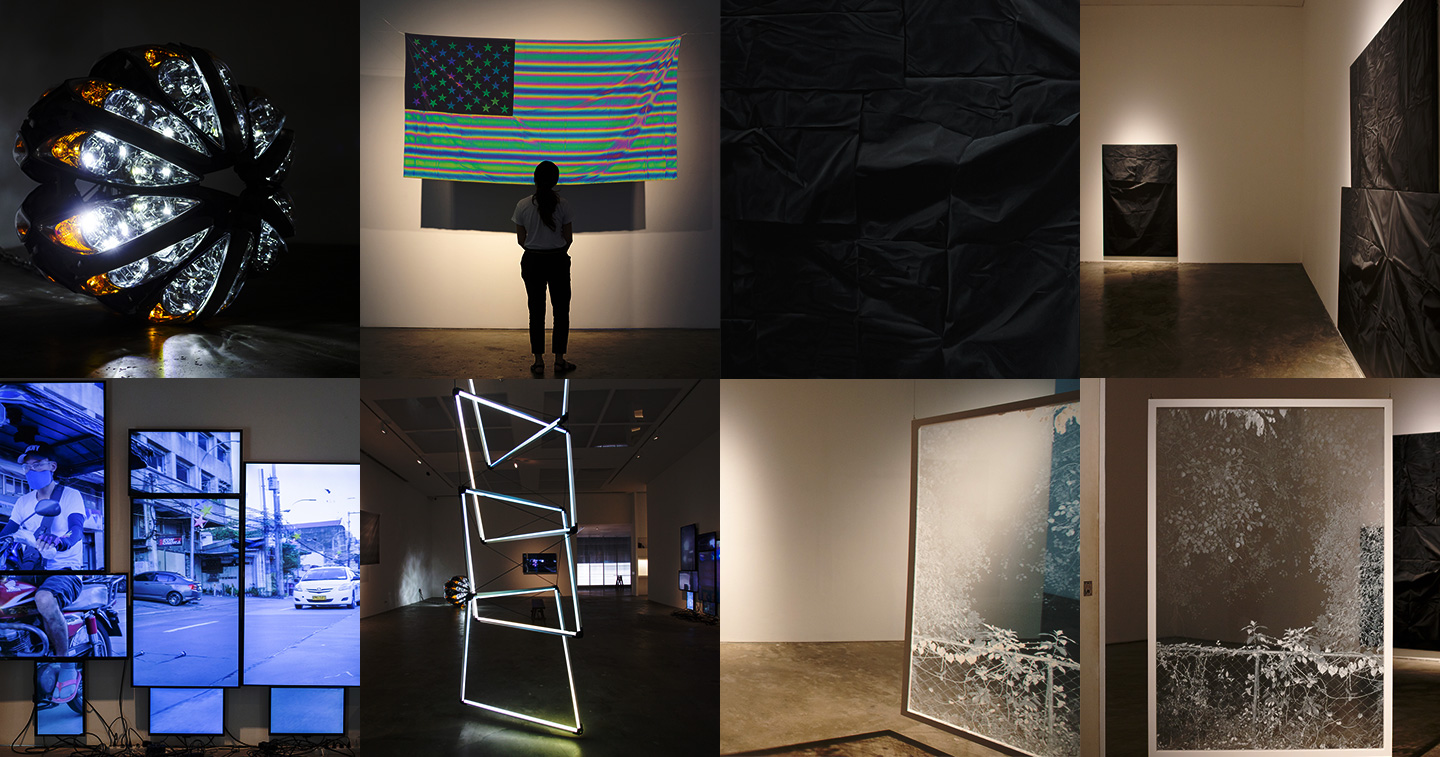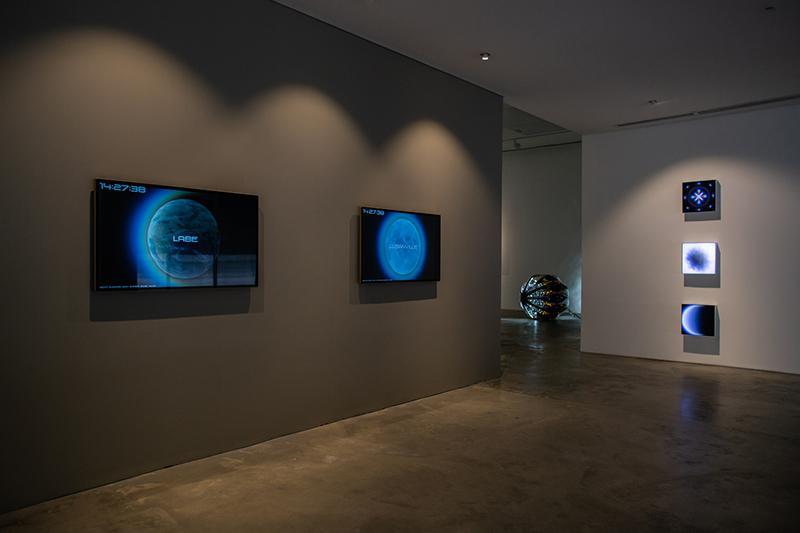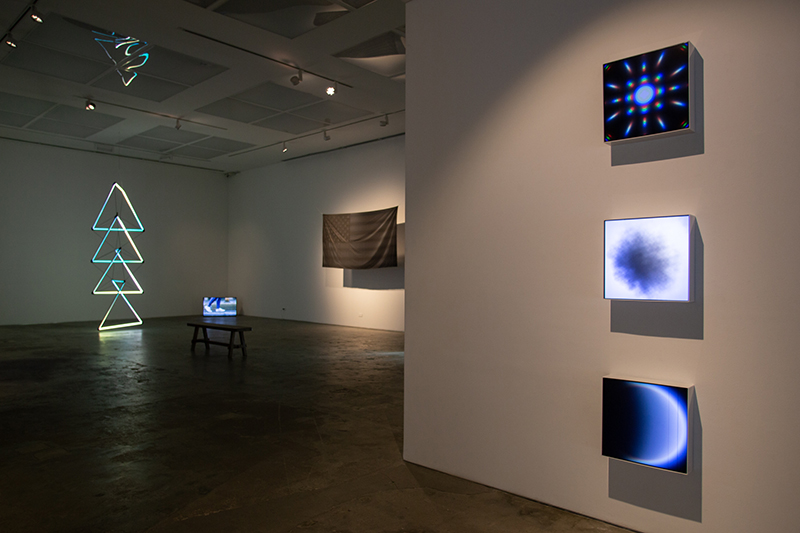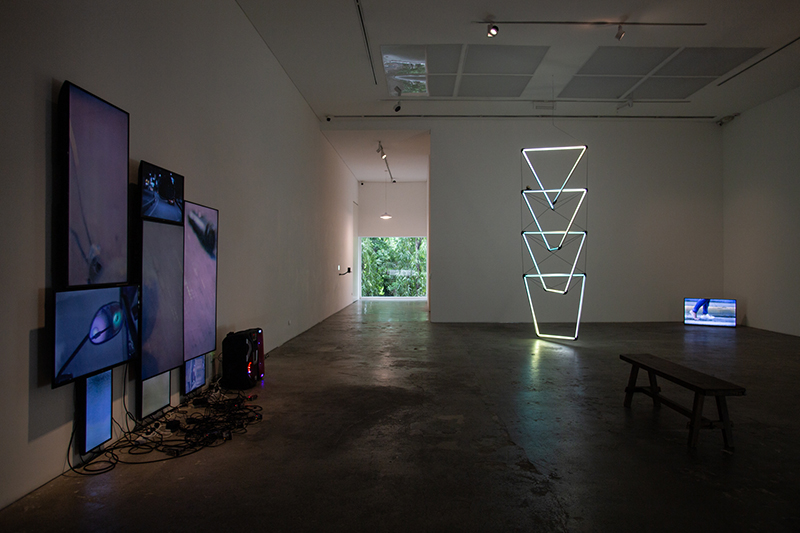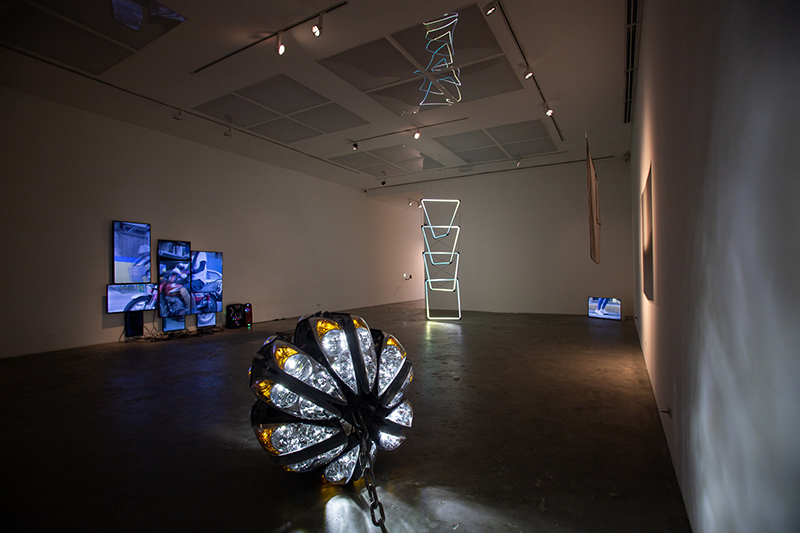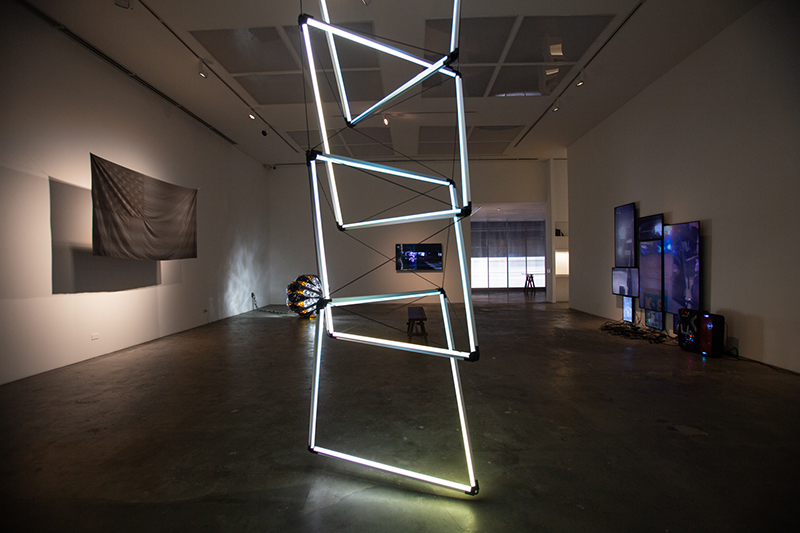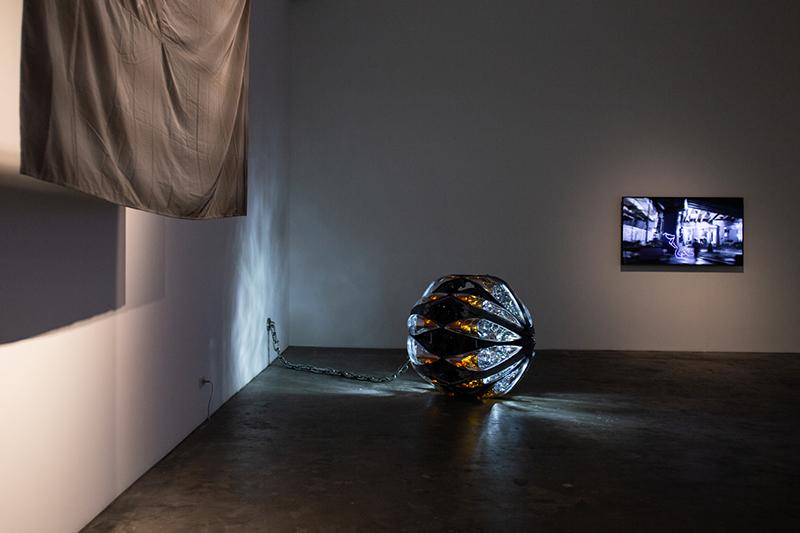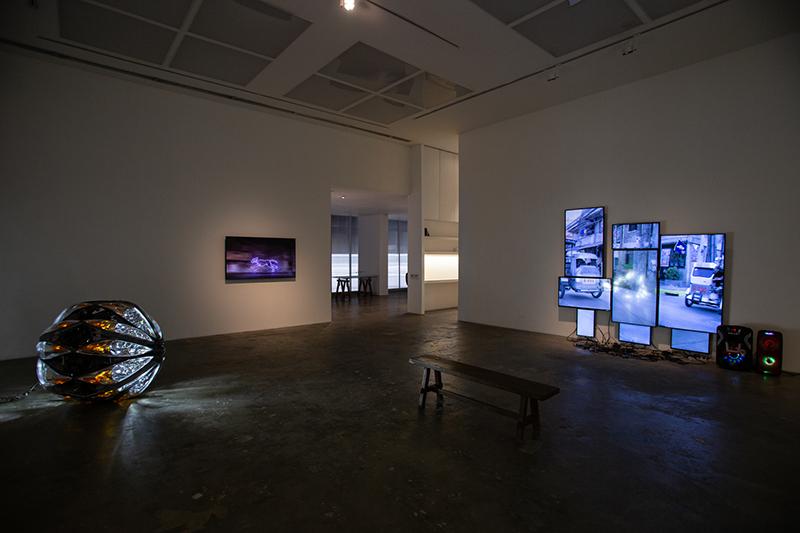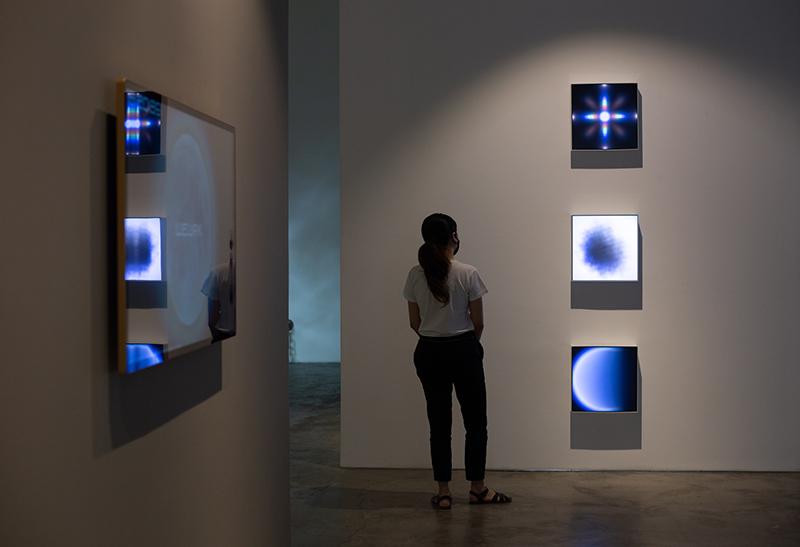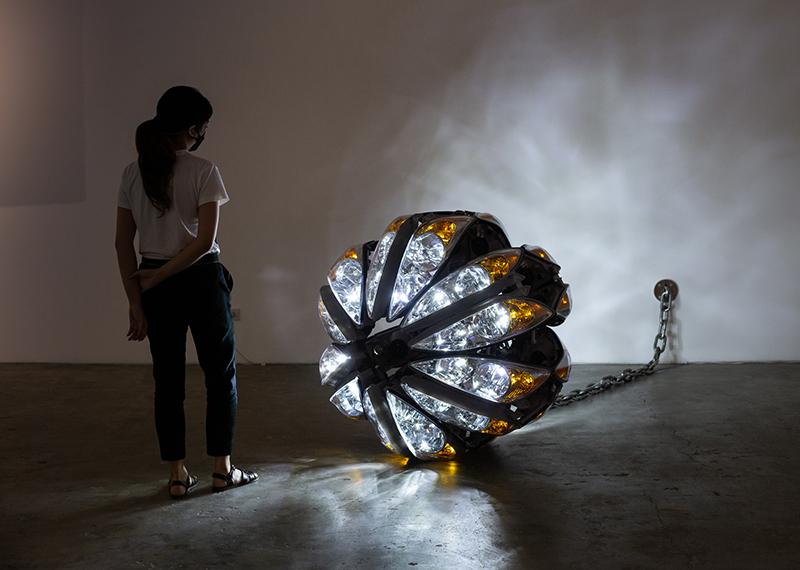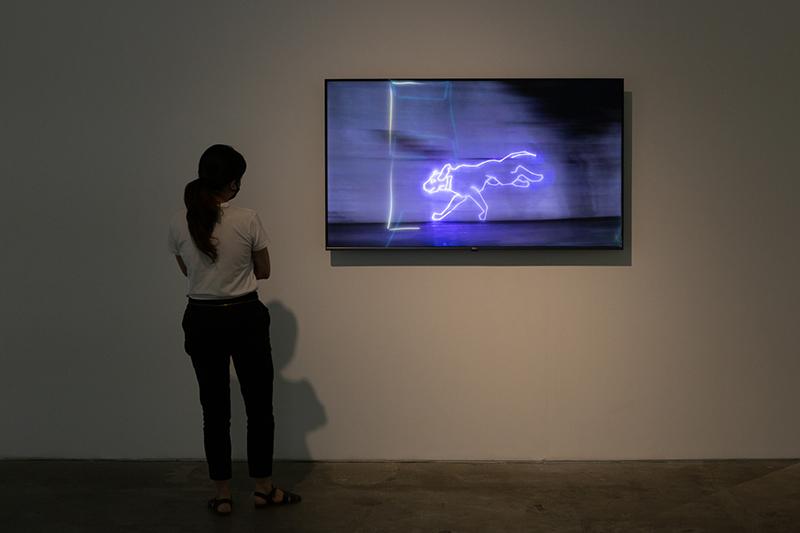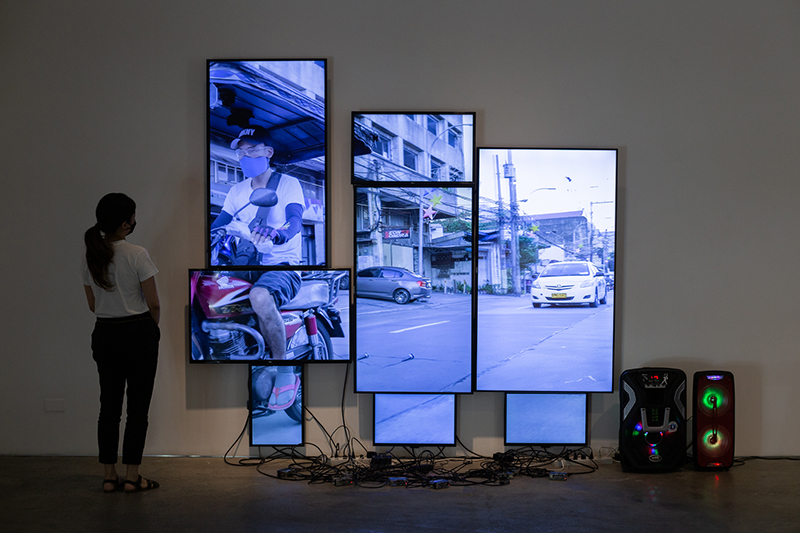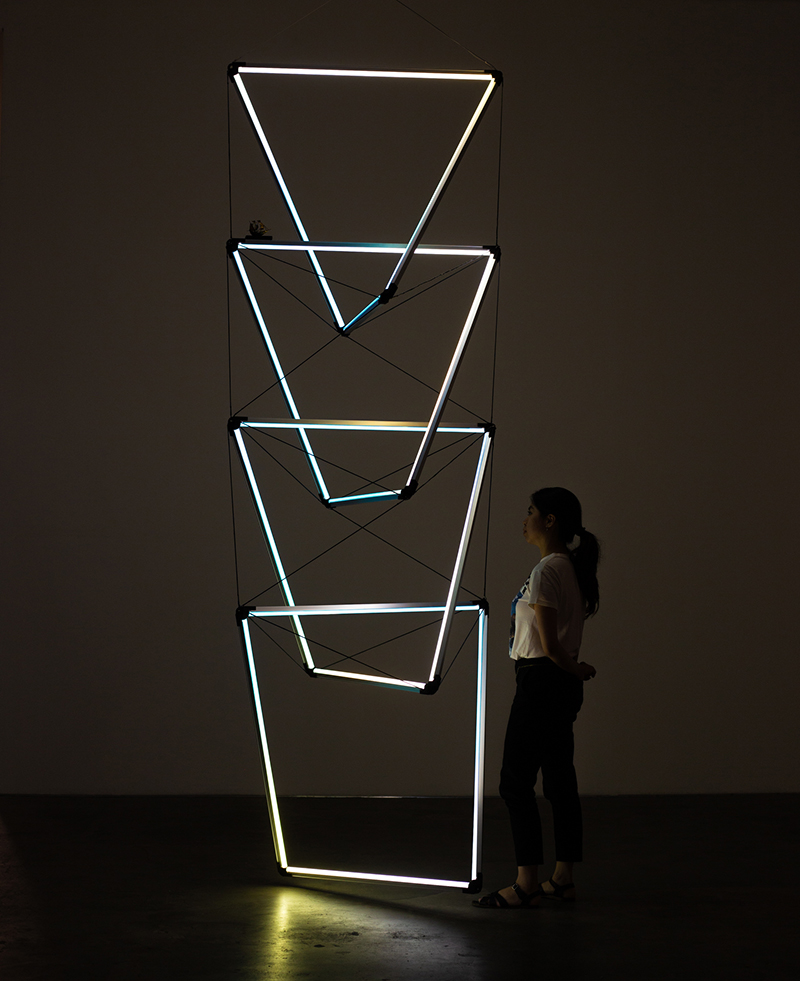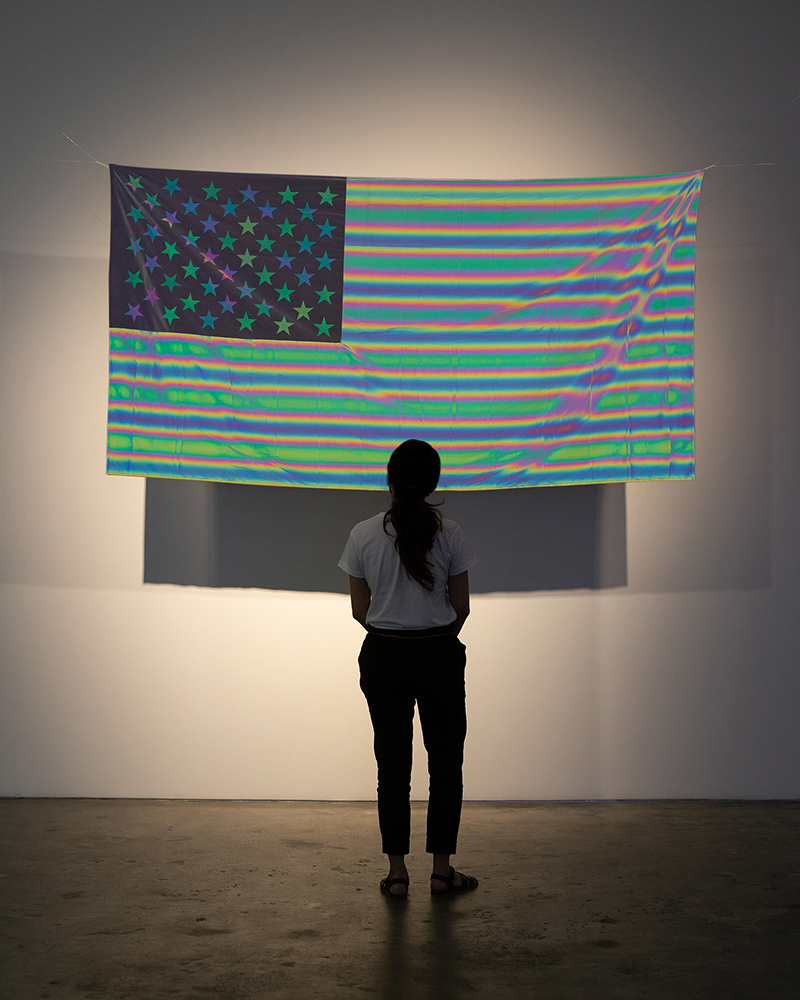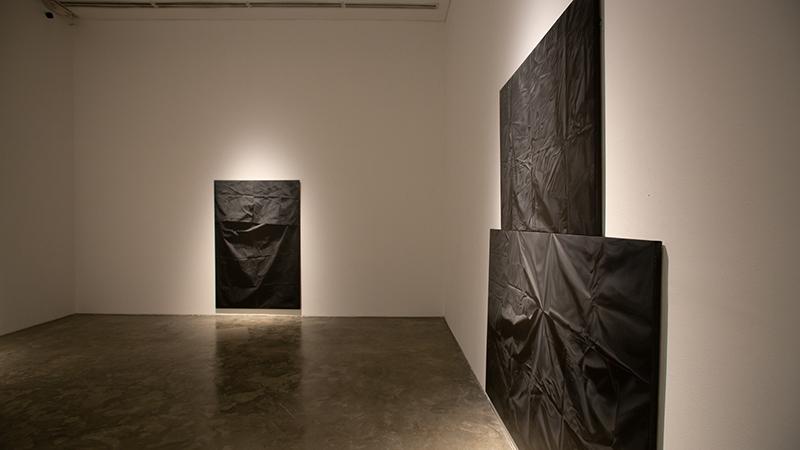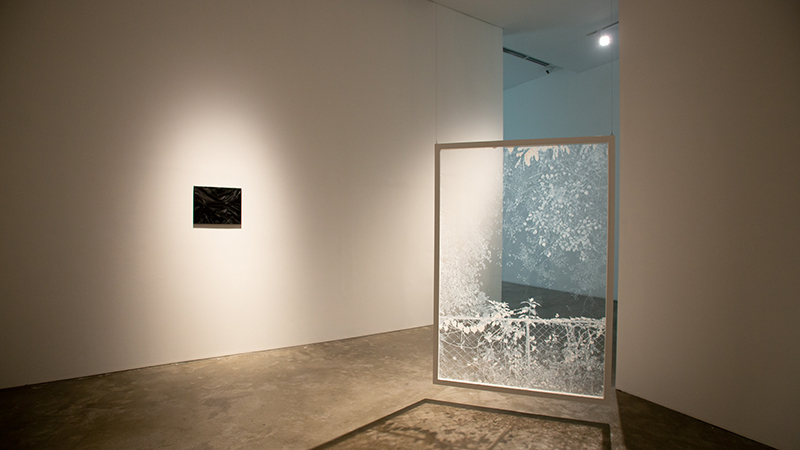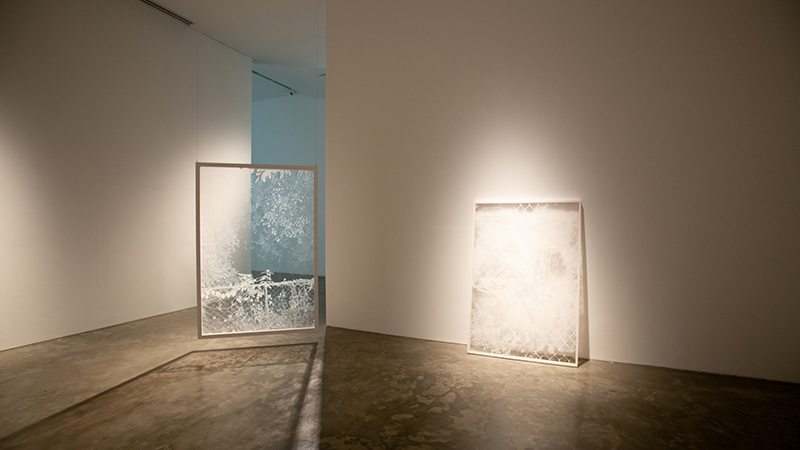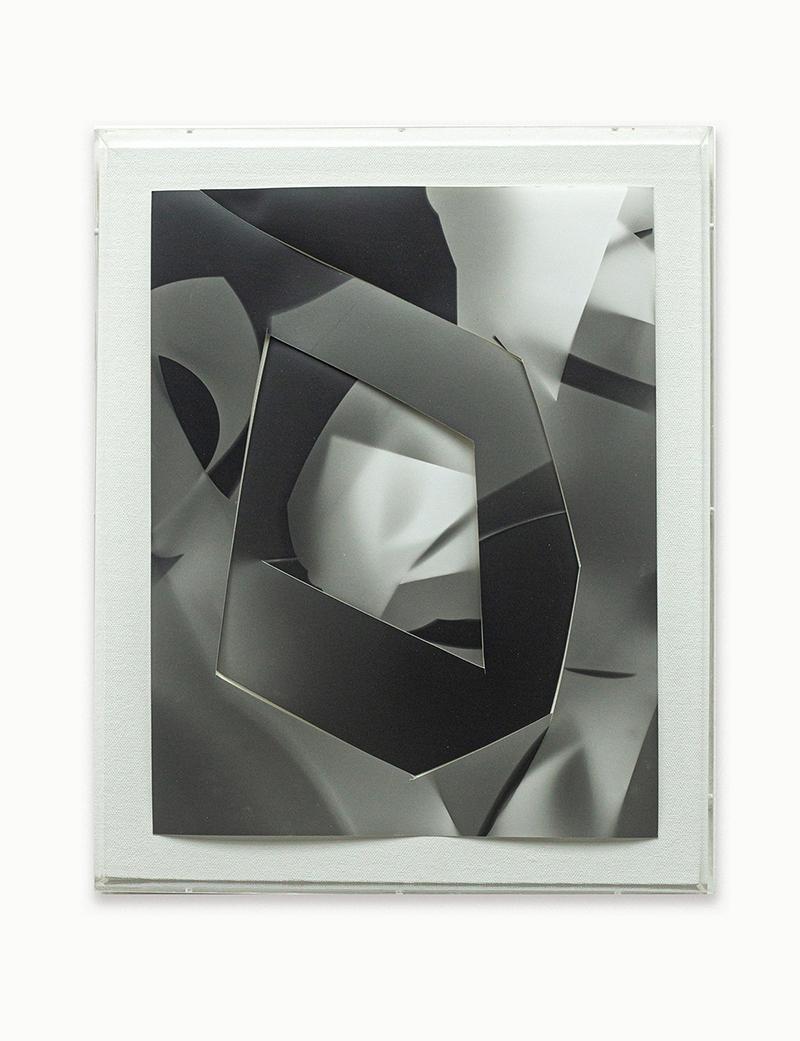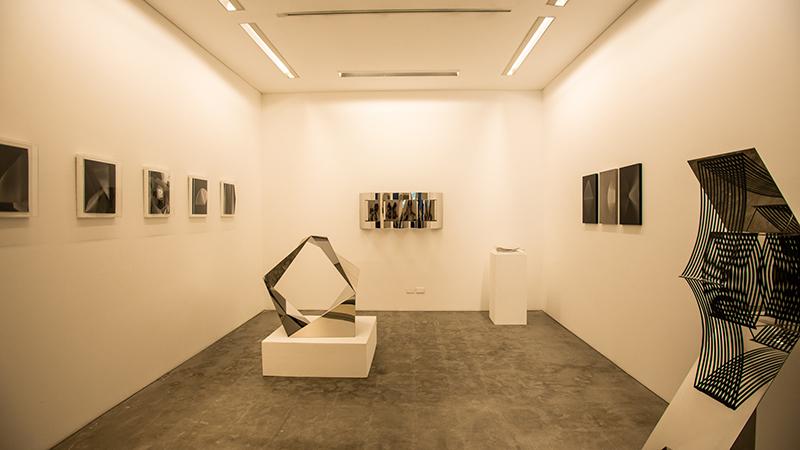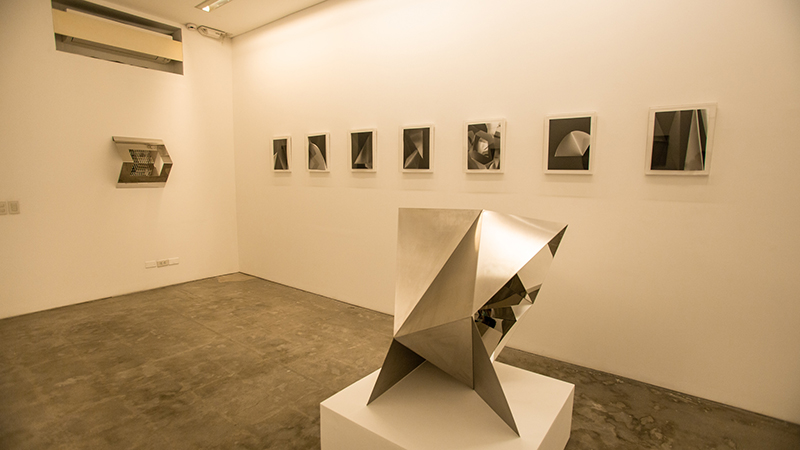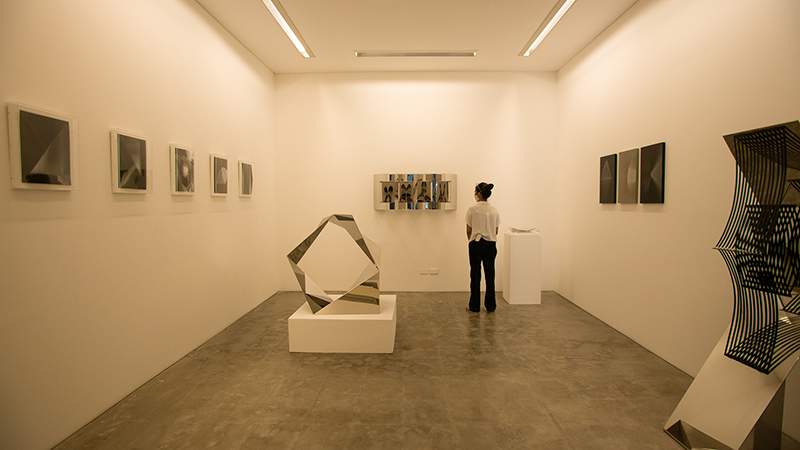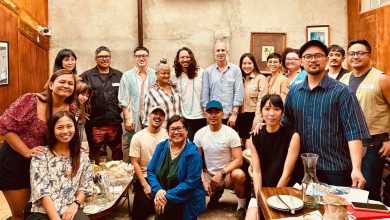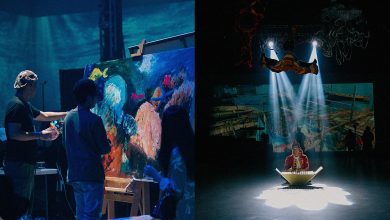MANILA, PHILIPPINES — Through its artist representation, institutional collaborations, art consultancy, and exhibition programming including art fairs and gallery partnerships, SILVERLENS aims to place its artists within the broader framework of the contemporary art dialogue.
Continuing its efforts to transcend borders across art communities, the gallery opens three fascinating shows by artists with distinct practices.
Share Location, a solo exhibition by James Clar
Words by Sara Raza
Share Location is a show by Filipino-American light and media artist, James Clar. This presentation marks Clar’s first solo exhibition as a represented artist of the gallery. Developed over the last year while transitioning his studio from New York to Manila, Clar’s new body of work derives its title from the GPS communication function of digital devices. It is a way of letting your presence be known, shared, or tracked. The works question ideas of presence, connection, and identity in a globalized world recently forced into a fifth space, where the rift between network time and solar time is ever increasing.
Working at the interstices of art and technology James Clar’s multifaceted global studio practice creates space for an abstract analysis into ideas inspired by the digital and human lived experience. Having held studios in multiple overlapping cities, which have ranged from Dubai, New York, Tokyo, and now Manila, Clar maps out alternative transcultural and transnational connections that transcend geographical borders and encourages fresh perspectives on the migration of art and ideas.
Engaging with a variety of arts media ranging from installation, performance, and sculpture, Clar has experimented with the notion of the ‘readymade ’and has explored the visual language of the sculptural form as a study into post-objecthood. This has allowed him to observe and relay the variable conditions of social and subjective spaces and explore ideas related to symbol and abstraction, the celestial and terrestrial, and history and discontinuity.
Clar’s works readily invite audience participation to explore technological innovation as a poetic tool for contemplating competing value systems. In this context his multifaceted art moves beyond the argument of “technology for technology’s sake” and “art for art’s sake,” to highlight the union of art and technology, which cannot be divorced from the contemporary practices of daily life. It allows us another way to contend with the liminal pandemic environment, polarization of truth, disparities in wealth and land, and the impact of fast speed globalization on the environment at large. These ideas operate as the basis for a new body of work that Clar created between New York and Manila during the pandemic and serve as an archive for a transitory history that cross-circulated the entire globe.
Threshold, a solo exhibition by Luis Antonio Santos
Words by Carina Santos
Luis Antonio Santos’ Threshold marks the artist’s fourth individual presentation with the gallery, his previous ones being Structures in 2013; Measuring Distance in 2015, for which he was shortlisted for the Ateneo Art Award; and (sounds fading, distant. sounds distant, muted) in 2018. The artist creates hyper-realistic renderings of draped canvas, allowing us to think about liminal spaces, and the meanings we imbue in innocuous materials.
A threshold demarcates space. It signifies a boundary, yet doubly exists as an indicator of the point at which something begins to change. We use “threshold” to measure the very limit of things like pain, temperature, longing, rooms. Similarly, the imagery Luis Antonio Santos utilizes for Threshold stands in as marks. The subjects of the work themselves are liminal spaces, enclosed in a constant sort of in-betweenness, delineating one state from another: the pause before a change.
The draped canvas paintings and fences both feature innocuous material, usual fare for Santos, who works with the meanings imbued in these materials. The focus shifts from what these barriers protect from our gaze — what is under construction and in the middle of becoming — to the thing that is enclosing them. What is put in the forefront is the vessel rather than what it contains. Seeing these things, we somehow become privy to the implication that behind these marks of demarcation, there is something that is not quite one or the other just yet.
This inability of solidifying one specific state leaches into his process, too. The collection of work in this show eludes strict categorization, particularly in genre. The paintings are rendered on a flat surface, giving off a dimensionality through tonal changes and a careful hand. They were worked from a three-dimensional sculptural object, captured as a photograph for reference, and then recaptured as a painting that looks like something actual. The fences are printed in white and in reverse on a clear sheet of plexiglass, set in front of the other work. These can be perceived alone or together, each time, position, and angle revealing a different part of the image, while masking and obscuring the other parts of it.
Volume, a solo exhibition by Micaela Benedicto
Words by Bobby Benedicto
Volume by Micaela Benedicto extends the artist and architect’s exploration of the spatial dimensions of memory and loss. Working at the intersection of photography and sculpture, Benedicto exploits the alchemical properties of metal and paper to construct pieces that register never-to-be-completed processes of becoming and ruination.
Micaela Benedicto’s latest exhibition, Volume, extends the artist and architect’s exploration of the spatial dimensions of memory and loss. Working at the intersection of photography and sculpture, Benedicto exploits the alchemical properties of metal and paper to construct pieces that register never-to-be-completed processes of becoming and ruination. Such processes—presented through cuts and folds, screens and mirrors—necessarily produce gaps and distortions. In Volume, these trace-effects demonstrate, not only how matter itself forgets and remembers, but how new forms are generated by objects that serve as records of time’s passage.
The photographs in this exhibition have no proper subjects. There is only the photosensitive paper exposed using the photogram method to a localized light source. Prior to exposure, the paper is cut and folded into three-dimensional forms, then disassembled once the photograph is captured. The resulting photograph is both less than and more than a picture or image. It represents no thing yet serves as a physical remainder of an event that has transpired, a transformation undergone in and by the void of the blank page alone. The photograph thus becomes a sculptural piece that evokes the architecture of a moment, a relic that bears discernible marks that suggest the prior presence of a photographic subject that never existed.
Where the photograms hold traces of a past, Volume’s metal structures distort the space they occupy to effect a present out-ofjoint with itself. Benedicto makes extensive use of mirror steel, which is set in folded or peeling gestures to capture fragmented reflections of the exhibition space and the movement of people. Multiplying and reordering images of their surrounds, the sculptures form a constantly changing present reality, made visible to differently positioned or moving viewers as a shifting form comprised of overlapping voids, steel, reflection, and shadow.
These exhibitions are ready for online viewing and open for physical viewing until July 24, 2021. While their physical space is open, gallery visits are strictly by appointment only. Schedule your visit through https://bit.ly/Visit-Silverlens.
About the artists
James Clar
James Clar is a light and media artist. His interest is in new technological production processes and their application to artistic narrative forms. He studied film at NYU and received his Masters from NYU’s Interactive Telecommunications Program. It was here that he began developing his own light systems to create visual sculptural works that combine light and technology.
From 2006 till 2012 James’ studio was based in Dubai where he became an active participant in the arts and culture scene of the globalized city. From 2012 till 2020 he moved his studio back to New York, and recently shifted his studio to be based in his native Philippines.
Clar was an artist in residence at Eyebeam Atelier in New York, Fabrica in Italy, and the FedEx Institute of Technology/Lantana Projects in Memphis. His artwork has been included in exhibitions at Glucksman Museum (Dublin), The New Museum of Contemporary Arts (New York), Pera Museum (Istanbul), Cam Francis Museum (Barcelona), MACBA (Barcelona), and SeMA (Seoul). He has been commissioned to develop large-scale installations for 21c Museum Hotels (Oklahoma), Parasol Unit Foundation for the Arts (UK), Fraport Headquarters (Frankfurt), and Dynatrace (Linz).
Luis Antonio Santos
Luis Antonio Santos (b. 1985) lives and works in Quezon City as a visual artist working primarily with painting and photography. His practice revolves around the tension between contradictions and engages with themes relating to identity using time, space, and memory as points of departure. Oil painting, screenprinting, and digital manipulated photography as aesthetic strategies are often employed along with the use of everyday utilitarian materials as subject matter to examine these ideas. He has been exhibiting since 2010 with solo shows at West Gallery, Silverlens Gallery, Blanc Gallery, Finale Art File, MO_Space, and most recently, the Drawing Room. He has also been included in several group exhibitions in Manila, Singapore, Hong Kong, and Malaysia. He has been shortlisted for the Ateneo Art Awards twice (2014, 2015) and has been nominated for the Signature Art Prize, Singapore Art Museum (2018).
Micaela Benedicto
Micaela Benedicto (b.1977) is an architect, artist, and musician living and working in Manila. Her ongoing work in visual art examines the ambiguities of space, memory, and loss, working with three-dimensional constructions and photograms to explore these relationships. She began exhibiting in group shows in 2010 and in solo shows in 2013. She has been a practicing architect from 2004 to the present, setting up her company MB Architecture Studio in 2008. Her architecture work has been published on Wallpaper magazine (UK), BluPrint, and L’Officiel. Her work in music (as part of Outerhope) has been published under Terno Recordings, Number Line Records, and Shelflife Records (US), from 2005-2018. A new music project will be released in 2021.
About the writers
Sara Raza
Sara Raza is a curator and writer on global art, and was the winner of the ArtTable New Leadership Award for Women in the Arts (2016). Sara was most recently the Guggenheim UBS MAP curator for the Middle East and North Africa and curated “But a Storm Is Blowing from Paradise” at the Solomon R. Guggenheim Museum in New York, (2016), which traveled to the Galleria d’Arte Moderna, Milan, (2018). In 2019 she was appointment as the first guest curator at the Rubin Museum of Art for the Year of Power and curated the exhibition “Clapping with Stones: Art & Acts of Resistance.” Sara has curated exhibitions and projects for several international biennials, festivals and museums, including recently the Rubin Museum of Art Mathaf Arab Modern Art Museum, Doha, Qatar and MacKenzie Art Gallery, Saskatchewan, Canada. She has also curated the Tashkent Biennial, Uzbekistan and “Rhizoma: Saudi Pavilion, Venice Biennial 2013); and the Baku Public Art Festival Azerbaijan (2015). She has organized a number of exhibitions for Maraya Art Centre, Sharjah. Formerly, Raza was the head of education at YARAT, Baku, Azerbaijan, founding curator at Alaan Art Space, Riyadh, Saudi Arabia and curator of public programs at Tate Modern, London. Sara is the West and Central Asia editor for ArtAsiaPacific and lives and works in New York where she runs her own independent global curatorial and visual cultures studio entitled Punk Orientalism. Sara holds a BA (hons) in Art History and English Literature from Goldsmiths College, University of London and a MA in Art History and Theory of the 20th Century also from Goldsmiths College, she also pursued studies towards her PhD at Royal College of Art, London. www.sararaza.com
Carina Santos
Carina Santos is an artist and writer based between Manila and London. She finished her MRes in Art: Theory and Philosophy at Central Saint Martins in 2019. Her research focus is on the inflection of space to the body, read through notions of linguistics and translation, phenomenology, and colonisation.
Bobby Benedicto
Bobby Benedicto is Assistant Professor in the Department of Art History and Communication Studies at McGill University. He is the author of Under Bright Lights: Gay Manila and the Global Scene (University of Minnesota Press, 2014). His current book project, Fatal Sex, examines the aesthetics of death in twenty-first century queer art and media.


